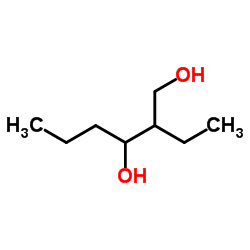Repeated exposure toxicity of 2-ethyl-1,3-hexanediol by cutaneous applications to the rat for 9 and 90 days.
J P Van Miller, P E Losco, D A Neptun, B Ballantyne
文献索引:Vet. Hum. Toxicol. 37(1) , 33-6, (1995)
全文:HTML全文
摘要
2-Ethyl-1,3-hexanediol (EHD; CASRN 94-96-2), an industrial chemical and insect repellent, has a high potential for recurrent skin contact. Short-term (9 d) and subchronic (13 w) repeated epicutaneous contact studies were conducted to determine the potential for cumulative local skin irritation and systemic toxicity in Fischer 344 rats. Doses were 0.5, 2.0 or 4.0 ml/kg/d of undiluted EHD. There were no clinical signs and no treatment-related effects on hematology, clinical chemistry or histology of a large number of organs and tissues including the treated skin. The only effects where slight decreases in body weight gain for the high-dose males in the 9-d study and males and females of the high-dose group in the subchronic study; slight decreases in food consumption for females of all treatment groups in the subchronic study; and slight increases in relative liver weight for high-dose females in the 9-d study and high-dose males in the subchronic study, which is probably a compensatory hypertrophy for the metabolism of EHD. Thus, recurrent epicutaneous applications of undiluted EHD to the rat did not cause any local skin irritation or cumulative or organ-specific toxicity.
相关化合物
| 结构式 | 名称/CAS号 | 分子式 | 全部文献 |
|---|---|---|---|
 |
驱蚊醇
CAS:94-96-2 |
C8H18O2 |
|
Comparative sensitivity of four Anopheles (Diptera: Culicida...
1991-05-01 [J. Med. Entomol. 28(3) , 417-20, (1991)] |
|
The acute toxicity and primary irritancy of 2-ethyl-1,3-hexa...
1985-12-01 [Vet. Hum. Toxicol. 27(6) , 491-5, (1985)] |
|
Prevention of Lyme disease.
1992-05-01 [Am. J. Hosp. Pharm. 49(5) , 1164-73, (1992)] |
|
Intralaboratory and interlaboratory evaluation of the EpiDer...
2009-03-17 [Mutat. Res. 673(2) , 100-8, (2009)] |
|
Pharmacokinetics of 2-ethyl-1,3-hexanediol. III. In vitro sk...
1995-11-01 [Fundam. Appl. Toxicol. 28(1) , 1-8, (1995)] |